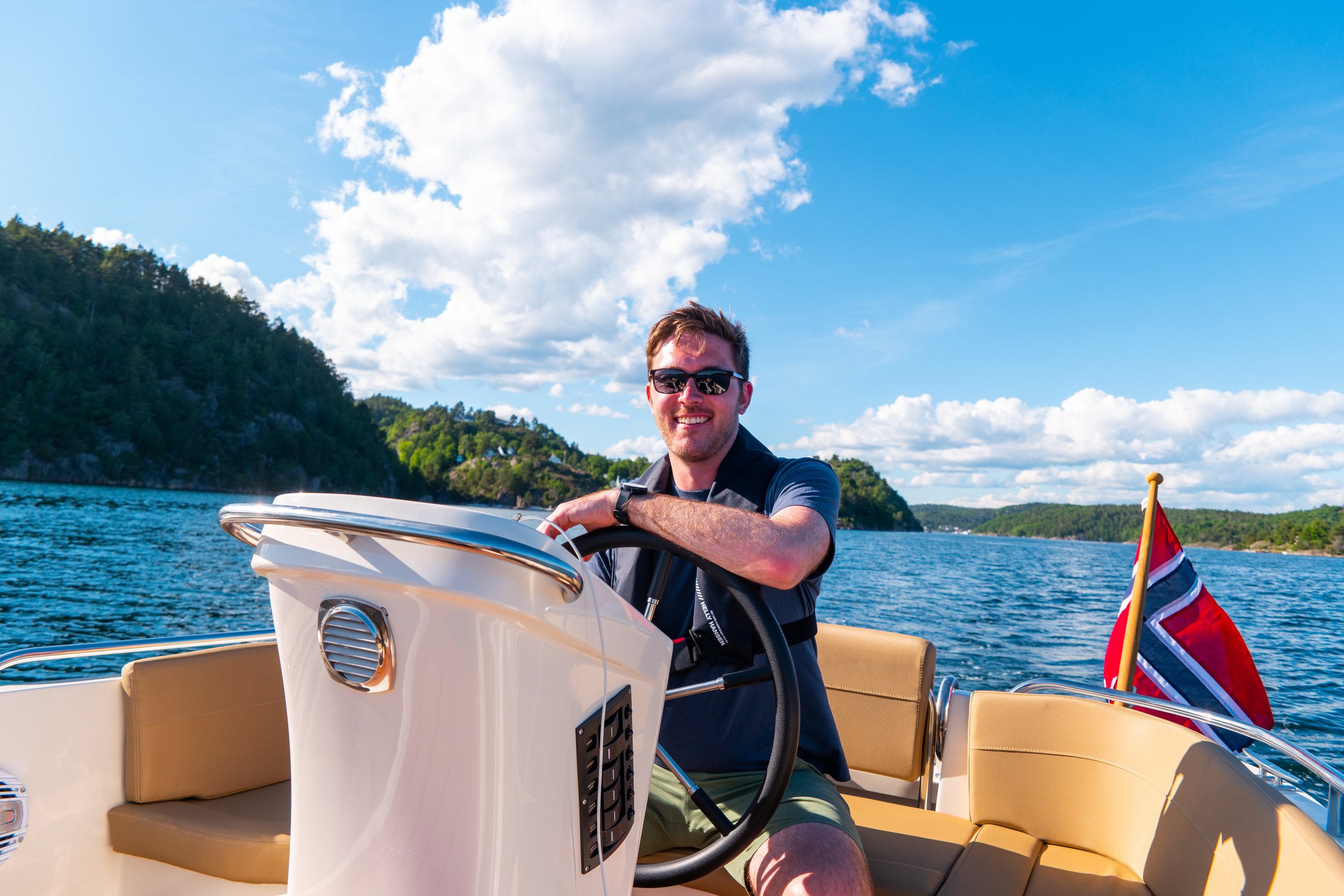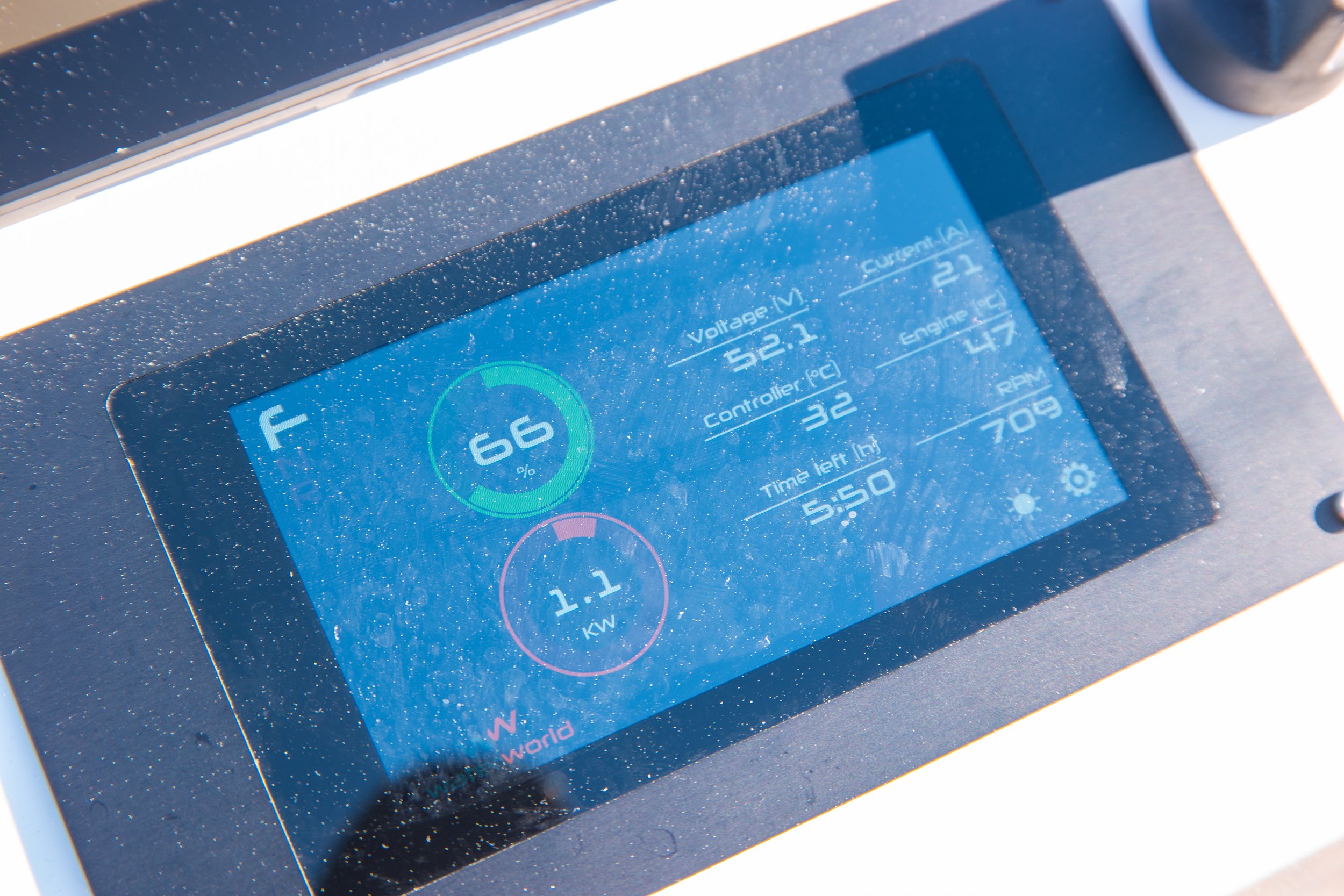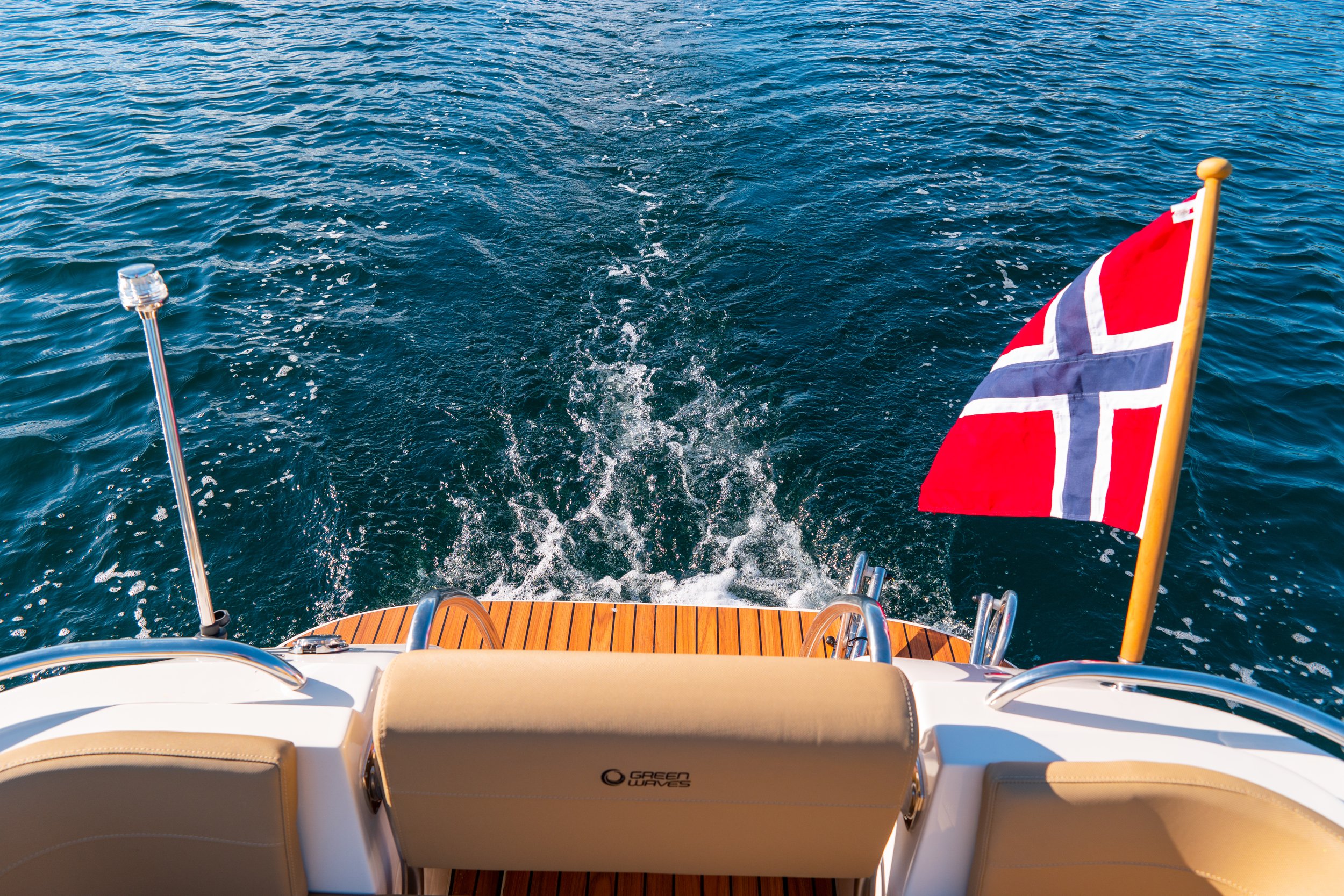We sailed 18 nautical miles with the electric GW 601!
CMO Oddvar Godø Elgvin and CTO Jakob Storjord Andersson on their way to Lydløs in Arendal. Photo: Green Waves
At Lydløs 2022, the electric boat show in Arendal, we were going to display our GW 601 and use the demoboat for test drives at the event. But instead of transporting the boat by car from Gjeving inside of Lyngør where the boat usually is located, CMO Oddvar and CTO Jakob wanted to test the boat for a longer trip. Questions about range is what we get the most of regarding the GW 601, and this trip was 18 nautical miles or 33 kilometeres (21 miles). Read more to hear how it went.
Departure
After packing food and drink, applying sunscreen and checking the system and batteries on board, we were ready to leave the pier at Gjeving. At 16:15 we released the ropes and moved quietly through the water. Before we started driving, Jakob had already calculated that if we stick to 1kW consumption and 3.5 knots speed, we would spend 5 and a half hours and arrive at Pollen in Arendal with 23% left on the battery pack. This gave us a good starting point for what to expect. And if he had calculated correctly - well, you can find out towards the end of the story.
The weather was fortunately on our side this Thursday, June 16th. There was some wind in the more spacious fjords, but the wind mostly stayed between 2-5 m/s and the temperature was a good 21-23 degrees Celsius before the sun eventually disappeared behind the mountains. We had already planned the route in advance, and we agreed to stay inland all the way for the sake of simplicity, but also to show ourselves and the boat to the many cabins and houses along the way.
This was the planned route we followed the whole way from Gjeving to Pollen in Arendal. Photo: Google Maps
In the comfortable and quiet speed of 3.5 knots we had a good opportunity to enjoy the beautiful surroundings in the June sun. This is a popular cottage area, but permanent residents also live along the route with large piers and beautiful gardens at the edge of the water. We greeted both passing boats and families who enjoyed dinner on their docks in the afternoon sun.
After one hour had passed, we had only used 16% of the battery pack, which by the way is only 10kWh. Of the electronic equipment on board, only the chartplotter from Raymarine was on constantly during the entire voyage. Otherwise, the refrigerator was turned on and off sporadically and the speaker system was used somewhat - which draws minimal power.
Along the way through Lyngørfjorden and Tvedestrandsfjorden we greeted families on the quayside and other boats that were also on the water for a drive. Even though it was a Thursday afternoon, we passed several other boats that were curiosity was piqued when they saw our "100% Electric" mark along the side of our boat. Many waved and cheered on us, while others even slowed down to stay alongside us and have a chat. Electric boats is new to most people and range quickly becomes the first thing they ask for. When we told them how far we had planned to drive, we got impressive reactions back.
Since we had such good weather conditions, we managed to keep the consumption at around 1.1kW on average. The speed remained 3.5 knots almost the entire journey, but in some places the underwater current took ahold of us and pulled us either up or down in speed. 3.5 knots is a very nice economy speed for GW 601, as the maximum speed is 6-7 knots. At this speed, there is also more sound from the water than the electric motor and it feels like sailing without a sail. Since the maximum speed inland is 5 knots in most places along the coast anyway, it was a speed we could live well with.
In the third hour, at 7:12 PM, we were at 58% and the 50% mark on the battery capacity was passed at 7:41 PM at the same time as we passed under the bridge to Arnevik. This meant that we had covered 11.6 nautical miles of the 18 nm long stretch. So for the time being we were well placed to hit the mark well on Jakob's calculation of 23% remaining battery capacity on arrival in Pollen in Arendal.
After four hours we passed Arendal Harbor and started on the last and long stage - Tromøysund. Here Oddvar's family came out with their own boat to cheer us on, and took some photos of us - huge thanks for that! We also had a long and pleasant chat with a passing boat who was very curious about how the electric boat worked. In Tromøysund we experienced that the wind picked up somewhat, as a headwind. This meant that we had to increase consumption to maintain the same speed.
But Tromøysund was also passed and finished in the end, and Pollen in Arendal approached by leaps and bounds. The sun had set behind the hills and the trousers had replaced the shorts. We were in good spirits and had a beautiful trip, but at the same time we felt the joy of soon arriving, when we passed the fifth hour.
Arrival
The time was 9:30 PM when we finally arrived at Pollen in downtown Arendal. And how much was left on the battery pack? We looked down at the display and the big numbers showed 24%. 24 percent remaining battery capacity, after 5 hours and 15 minutes of driving time at 3.5 knots. In other words, Jacob's calculations were close to perfect. We could have actually driven even further, but our feet were quite happy to get solid ground to stand on after a long afternoon and evening at sea.
We attached the boat to the edge of the pier in Pollen and plugged the cable into a 10 A plug. And when we got back to the boat the next morning, the batteries were fully charged again and ready for two long days of test rides during Lydløs.
We documented the entire journey on our Instagram Story. Click here to see. (Norwegian)
At 9:30 PM we arrived the Pollen in Arendal with 24% remaining battery capacity. This photo was taken right before we reached the quayside. Notice the “Time left” at 2.2kW consumption. Photo: Green Waves


















